

John,
We're approaching October's end and the bat silhouettes hung in windows and suspended from ceilings can mean only one thing: It's Bat Week!
Okay, maybe they're just Halloween decorations, but that doesn't mean bats don't deserve their own holiday. So in honor of Bat Week (and Halloween), here's five facts about our favorite flying phenoms:
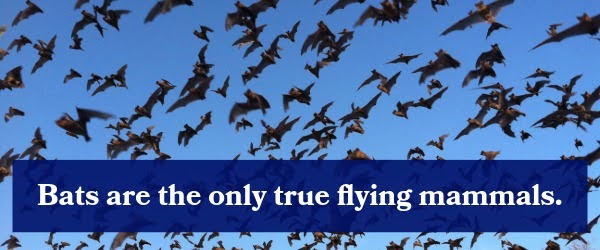
Though several mammals such as flying squirrels, sugar gliders and colugos can glide impressive distances, bats are the only mammals that can truly fly.
Their wings are similar in structure to the human hand (that is, if our fingers were about equal in length to our arms and connected by a web of skin). This allows them to move through the air with ease, changing direction with the wave of a finger.1,2
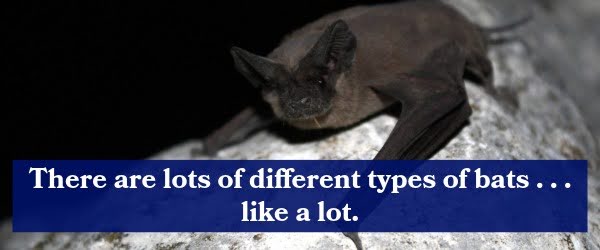
There are more than 1,400 different species of bats in the world, living on all continents except Antarctica.3
Scientists have divided bats into two suborders -- the megabats, a single family made up of the old world fruit bats, and the microbats, which encompasses the other 17 bat families. All 47 species of bats in the U.S. and Canada are microbats.4
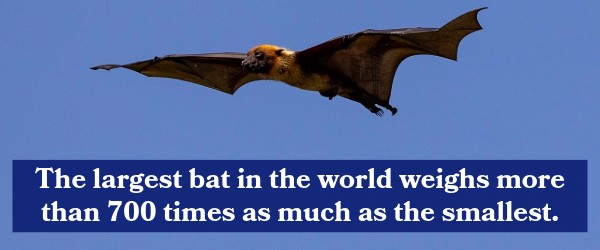
That's right. The giant golden-crowned flying fox, a fruit bat native to the Philippines, is the largest bat in the world. Adults have wingspans pushing 6 feet and can weigh up to 2.6 pounds.5
Compare that to the smallest bat (and smallest mammal by body length), the Kitti's hog-nosed bat, which measures about an inch and a third from nose to rump and weighs slightly less than a dime.6
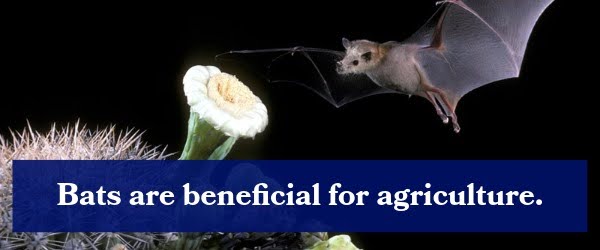
If you've ever been spooked by a bat flapping near your head on a warm evening, don't worry: she was probably aiming for the pesky mosquitoes vying for your blood. Most bats in the U.S. are insectivores, often eating their body weight in insects nightly.7
It's been estimated that bats cover about $3.7 billion in insect control in the U.S. each year, allowing farmers to use fewer pesticides and keeping our ecosystems healthier.8
And it's not just insect control. More than 500 species of flowers rely on bats as primary pollinators. We have bats to thank each time we eat a banana or drink a margarita (bats are the exclusive pollinators of agave, from which tequila is sourced). They also aid in seed distribution of cacao, figs, mangos and so much more.9
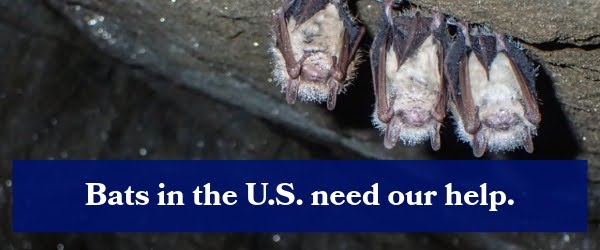
Across the world, bats are threatened by habitat loss, but in North America, an additional danger has emerged: White-nose syndrome. The name may sound innocuous, but this fungal infection has killed millions of bats in 40 states.10
The plight of our bats has been gaining attention. After Environment Colorado and our national network submitted more than 14,000 public comments calling on the U.S. Fish and Wildlife Service to better protect northern long-eared bats, they were given endangered species status.11
By changing public perception, protecting bat habitat and campaigning for Endangered Species Act protections for bats impacted by white-nose syndrome, we can help secure a brighter future for these fabulous flying critters.
Wishing you a happy Bat Week,
Ellen Montgomery
P.S. As disease and habitat loss continue to threaten their survival, bats need all the help they can get. Will you give to help support bats and other at-risk wildlife?
1. Stephen M. Jackson and Richard W. Thorington Jr., "Gliding Mammals: Taxonomy of Living and Extinct Species," Smithsonian, last accessed October 14, 2025.
2. "How Bats Fly," National Park Service, last accessed October 14, 2025.
3. "13 Awesome Facts About Bats," U.S. Department of the Interior, October 24, 2024.
4. "Bat Facts," Smithsonian, last accessed October 14, 2025.
5. Laura Geggel, "15 of the largest animals of their kind on Earth," Live Science, May 6, 2017.
6. Matt Hrodey, "The Bumblebee Bat: The Smallest Mammal in the World," Discover Magazine, May 27, 2023.
7. "13 Awesome Facts About Bats," U.S. Department of the Interior, October 24, 2024.
8. "Made Possible by . . . Bats," U.S. National Park Service, last accessed October 14, 2025.
9. "Made Possible by . . . Bats," U.S. National Park Service, last accessed October 14, 2025.
10. Lillian Ali, "A Fungal Disease Ravaged North American Bats. Now, Researchers Found a Second Species That Suggests It Could Happen Again," Smithsonian Magazine, May 30, 2025.
11. Steve Blackledge, "New protections for northern long-eared bats," Environment America, December 6, 2022.
Your donation will be used to support all of our campaigns to protect the environment, from saving the bees and protecting public lands, to standing up for clean water and fighting climate change. None of our work would be possible without supporters like you. Environment Colorado may transfer up to $50 per dues-paying member per year into the Environment Colorado Small Donor Committee.
Environment Colorado, Inc.
1543 Wazee St., Suite 400, Denver, CO 80202, (303) 573-3871
Member questions or requests call 1-800-401-6511.
Facebook | Twitter

If you want us to stop sending you email then follow this link -- Unsubscribe.